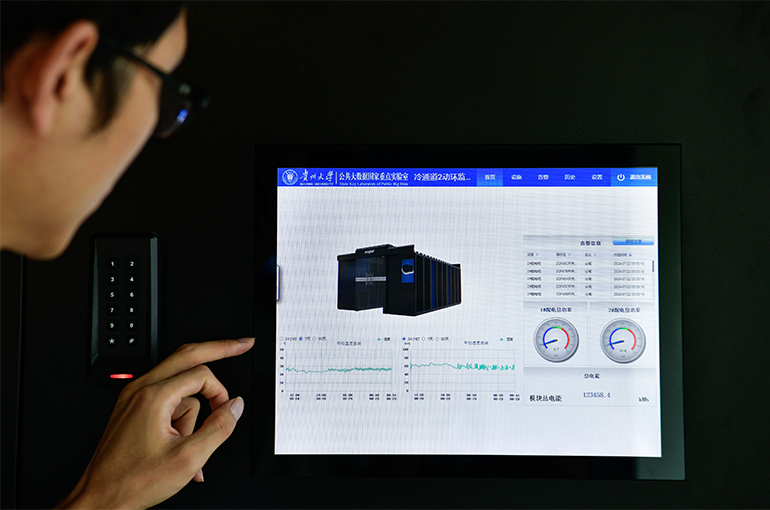 Chinese Chipmakers Race to Adapt Chips to DeepSeek Chatbot
Chinese Chipmakers Race to Adapt Chips to DeepSeek Chatbot(Yicai) Feb. 13 -- Chinese semiconductor manufacturers are anticipating that the recent runaway success of artificial intelligence startup DeepSeek’s open-source large language model will drive demand for greater computing power and are concentrating their efforts on modifying their chips to the chatbot’s structure to ensure the AI assistant runs efficiently on their hardware.
Chipmakers such as Ascend, MetaX, Biren Technology, and Loongson Technology, have all said their chips are now compatible with DeepSeek’s LLM.
After DeepSeek’s chatbot took the tech world by storm last month, Open Source China’s open-source AI model hosting platform Gitee AI has been working closely with domestic chip manufacturers to help them update their chips to ensure that the AI assistant runs smoothly on them, Chairman Ma Yue told Yicai.
DeepSeek employs self-reinforcement learning optimization algorithms, a source from Iluvatar CoreX said. To align with these unique algorithms, chip manufacturers are optimizing hardware architectures, improving instruction sets, enhancing the efficiency of chips in handling complex computations, and boosting memory management and data transmission.
"DeepSeek reduces ineffective training by 60 percent through its reinforcement learning mechanism and lowers the demand for parallel computing by 40 percent compared to traditional architectures,” said Yu Qingyang, senior consultant at the digital economy research center of the Shanghai Artificial Intelligence Research Institute. “This allows domestic chips to achieve an energy efficiency ratio of up to 75 percent of that of US chip giant Nvidia's graphics processing units in specific computing tasks."
DeepSeek's innovative LLM has shown that algorithmic innovation can break through computing power bottlenecks, even though challenges related to computing power dependence and generalization capabilities persist, Yu added. With the continuous optimization of performance and energy efficiency in domestic chips, such as the Huawei Ascend 910B, Chinese enterprises may significantly reduce their reliance on imported chips.
Keeping Up With Developments
The adaptation of domestic chips to open-source models still lags behind Nvidia, even though a number of them have already embraced the DeepSeek AI assistant, Ma Yue said. "The open-source community Hugging Face has over a million open-source AI models. The Gitee AI platform has over 10,000, and these LLMs can run smoothly on Nvidia GPUs. However, the Chinese chip manufacturer that has collaborated the most and for the longest time with Gitee AI has adapted only around 500 models so far."
Compatibility of chips with large models developed using Nvidia GPUs, including DeepSeek, is closely related to whether the chips support Compute Unified Device Architecture. Some chip manufacturers with lower CUDA compatibility have dedicated teams of over 100 people and have spent more than a month modifying their chips to make them compatible with DeepSeek-V3, Yicai learned from industry insiders. The speed of completing adaptation and optimization is crucial for the timely launch and commercialization of models.
But Chinese chipmakers should not expect to achieve tasks such as running the hottest open-source models or capturing a larger share of the AI market overnight. "Generally, chatbots iterate every three to four months. If it takes a long time to adapt to an ecosystem or a model, it means you won't make money," said Yang Jian, chief technology officer of MetaX.
Ninety-eight percent of global LLM training relies on Santa Clara-based Nvidia's computing power, and training cannot be done without Nvidia GPUs, Yang said. While more non-Nvidia cards may have the opportunity to enter the post-training phase this year, their share will be relatively small in the short term.
Reaching the Ceiling
Moreover, some industry experts believe that the Hangzhou-based DeepSeek team has nearly reached the ceiling in terms of underlying computing power optimization, and related technologies are difficult to transfer. The path of "squeezing" GPU computational power, as seen with models like DeepSeek, can indeed continue, but the potential for further significant improvements is limited, said Chen Wei, CEO of Memory Compute.
While there is ongoing debate about whether the demand for computing power in training is decreasing, there is broader consensus on the increasing demand for computing power in inference. After DeepSeek-R1 sparked widespread discussion, the future of AI seems to be shifting from training to inference, according to TechInsights.
Nvidia also noted that the inference process of DeepSeek requires a large number of Nvidia GPUs and high-performance networks, and DeepSeek's success demonstrates that the market demand for Nvidia chips remains strong.
Editor: Kim Taylor